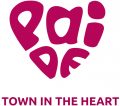On 13 and 14th June, the Circular Based Waste Management-CBWM project was invited to join the EU-WATERRES project in a study tour in Riga, Latvia, to learn about waste management and microplastics and to the event on “Protection of transboundary groundwater against pollution and depletion”.
Visit to Getlini EKO landfill
Project partners from Mažeikiai District Municipality, Telšiai Region Waste Management Centre and Green Business Norway, took part in the tour where the first visit was made to Getlini EKO, which manages the largest municipal solid waste landfill in the Baltic States. The landfill is the biggest and one of the most modern in Europe and it is currently being further developed as a modern and safe waste processing centre.
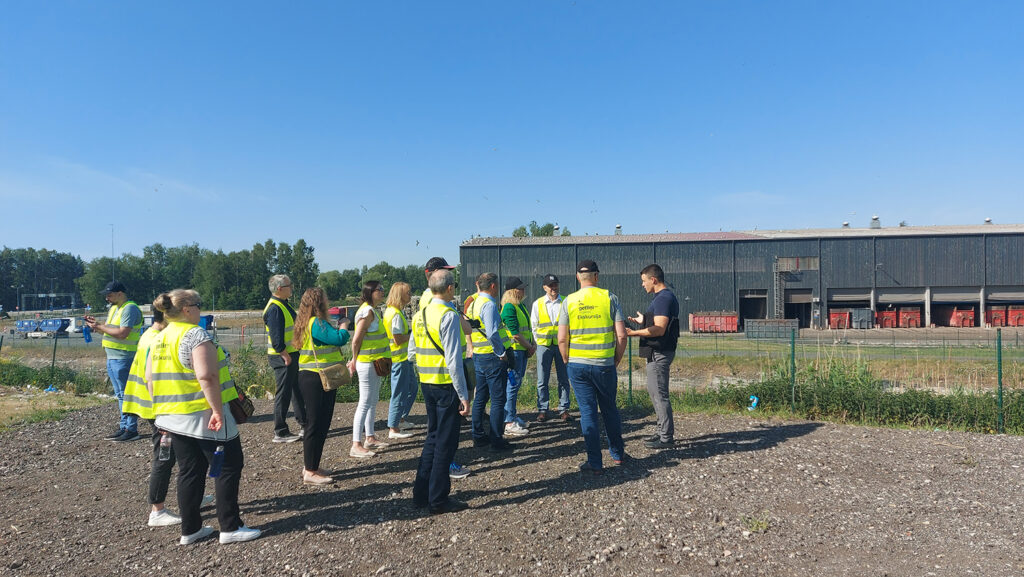
The landfill manages solid household waste, biodegradable waste, production and construction waste generated in the Pierīga region of Latvia. The sorting plant at the facility receives around 300,000 tons of waste every day and accepts biodegradable waste, PET bottles, tin cans, waste containing ferrous and non-ferrous metals as well as light plastics, textiles and paper. The facility is fully automated so it is operated by just 4 people. Waste sorted is sent for recycling, whereas plastic bags, paper and textiles are sent for incineration, the ash of which is mixed into concrete. Anything that cannot be recycled is sent to be buried in the landfill.
Vehicles arriving at the facility are checked for radiation, if any hazardous waste is detected, it is removed and sent away. Typically, such incidents happen just once or twice a year. On one occasion radiation was detected from the driver who had had an x-ray some days earlier.

The facility also receives construction, biological and bulky waste – construction waste is crushed to gravel used to pave roads or for other construction projects.
Residents in the region can sort their waste into different containers: paper, plastic and metal are collected in one container, whereas there are separate containers for organic, glass and mixed waste. Containers are also available for electrical and textile waste at designated locations.
The landfill is composed of cells, these are compartments comprised of layers of sand, gravel and clay with pipes underneath that collect leachate (wastewater) and methane gas forming as the waste decomposes. Wastewater is cleaned and sent to wastewater treatment plants, whereas the methane gas is used to produce heat for the onsite hydroponic greenhouse where orange, red and pink tomatoes and cucumbers are grown.

The tomato plants at the greenhouse reach 15 metres tall and no insecticides are used, instead a green bug that is a natural enemy for pests is present and pollination is done by the 4,000 bumblebees living in the facility. Around, 1,5 million cucumbers are produced which are helped to grow faster with the help of special LED lights. There is also a shop onsite where tomatoes and cucumbers can be bought.

Getlini EKO emphasises the importance of education on waste issues and so the facility is open for visits. The company also organizes environmental education classes for schoolchildren and adults covering topics from environmental protection and waste management through to natural resources and energy efficiency.
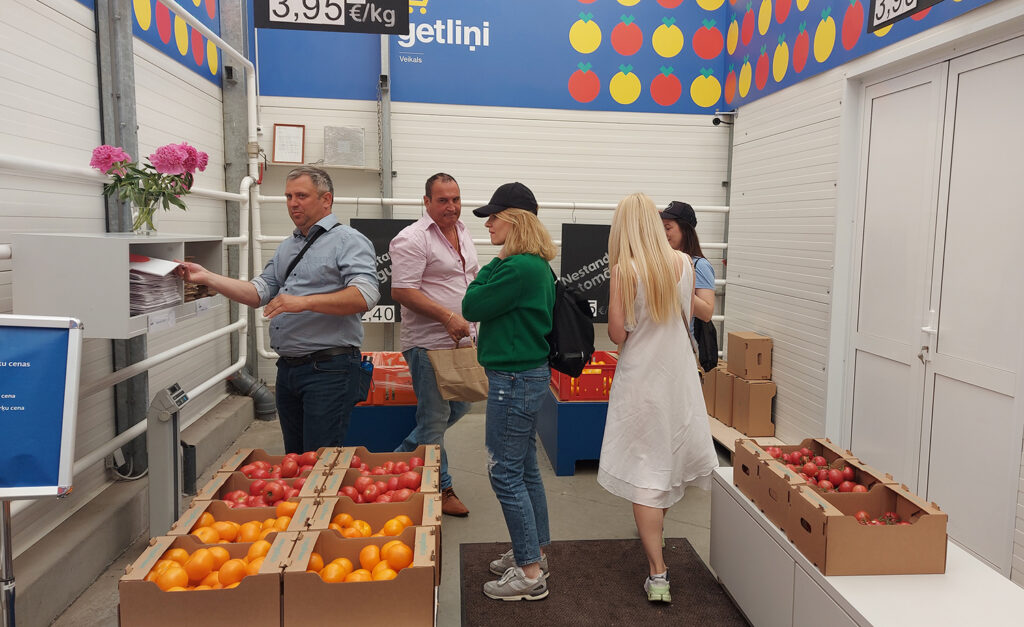
Demonstration of microplastics sample collection
Continuing the tour, the group visited Jūrmala beach, where a demonstration of microplastics monitoring methods was made by Dr. Inta Dimante-Deimantoviča from the Microplastic Laboratory at the Latvian Institute of Aquatic Ecology.
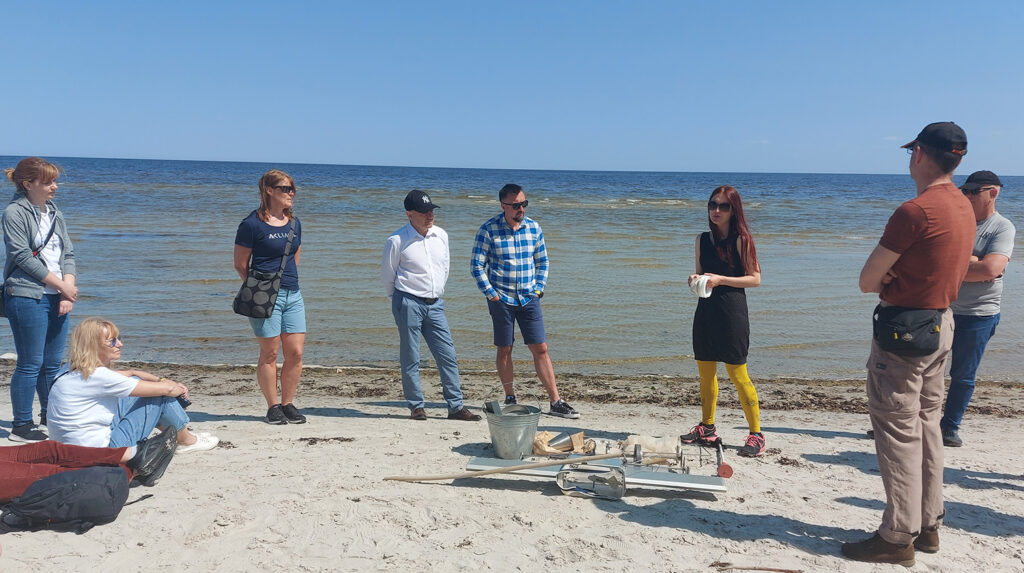
Microplastics are plastic fragments of 5mm and below. These are either manufactured for commercial use or are a result of degradation of larger plastic debris on land or in the sea. Dr. Dimante-Deimantoviča works on developing monitoring methods of potential changes and threats that microplastics may pose on the environment and living organisms. A demonstration was given on Jūrmala beach of how samples are collected with three different methods. These involve filtering sand through 5 and 3mm sieves, or a net of 300 micrometers collecting samples from the water. Other tools involved are made form metal, glass or teflon in order to not contaminate the sample. Cleaning samples in the lab to check for microplastics is a lengthy process and can take from 4 days to two weeks, depending on the method used, adding to the cost of analysing samples. In 2021, the widest study was carried out for the first time on microplastics in Latvia, where volunteers helped by collecting samples from 25 sites, providing this way a baseline for monitoring. As microplastics and their effects are becoming better understood, Dr. Dimante-Deimantoviča expects there will be legislation for monitoring microplastics in seas and water bodies.
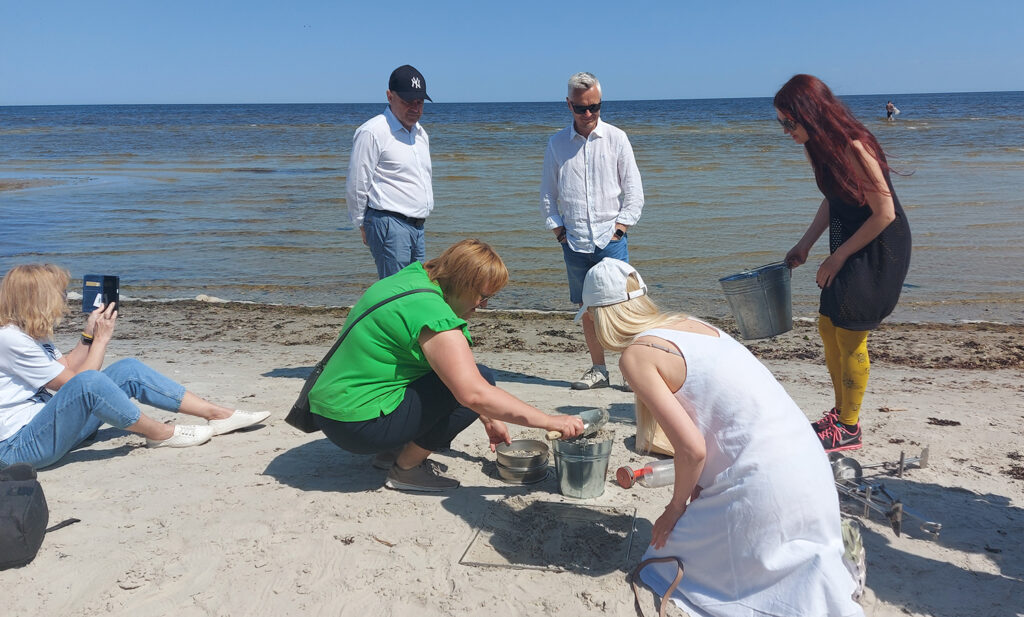
Ķemeri Sulfuric Ponds
The final stop for the day was to the sulfuric springs in Ķemeri National Park. The ponds are a result of water becoming exposed to sulphates from a sublayer of gypsum reacting with bacteria in the soil. The resulting reaction gives off a smell similar to rotten eggs.

At the site, the Ķemeri health resort was established in the 18th century due to the therapeutic qualities of sulphur water. In 1911, there was a direct train to Ķemeri from Moscow. The resort was severely damaged firing the First World War. After the Republic of Latvia was established, the resort was rebuilt and grew its popularity when a new luxury hotel was built in 1936. The hotel was closed for renovation at the end of the 20th century and its time for reopening remains unconfirmed.

Protection of transboundary groundwater against pollution and depletion event
On the second day, the event “Protection of transboundary groundwater against pollution and depletion” by the EU WATERRES project took place at the University of Latviaand moderated by Inga Retike, Communication Manager for the project.

Participants were welcomed by the University’s Vice-Rector, Prof. Valdis Segliņš who in addition, gave a tribute speech on the situation in Ukraine. Mr. Artem Takhtarov — Second Secretary of the Embassy of Ukraine in the Republic of Latvia,offered insights andcommented on the situation in Ukraine.

Both the EU WATERRES and the Circular Based Waste Management projects are funded by the Iceland, Liechtenstein and Norway through the EEA and Norway Grants Fund for Regional Cooperation and connected following the war in Ukraine by writing anarticle for the Regional Cooperation magazine on how the situation has affected their Ukrainian partners and by extension the projects.
Further tributes were paid to Ukrainian partners by having a moment of silence and Ms. Tetiana Ryvak from Zahidukrgeologiya, a geological exploration enterprise from Ukraine giving an update on the situation in the country.

The event continued with a presentation by Ms. Madara Zingere from the State Environmental Service of the Republic of Latvia who offered insights on the digital transformation of the contaminated site management model of Latvia. The register of contaminated sites was built 20 years ago with information distributed partly in paper. The majority of pollutants at contaminated sites are derived from petroleum products and production byproducts, followed by organic matter such as pesticides, solvents and phenols with some sites contaminated by mixed pollution, inorganic matter and heavy metals. Currently the work being carried out is to digitise the register while updating all the information on the sites and linking it to other standard information systems so that information can be circulated faster and more efficiently. In this respect, the State Environmental Service has been cooperating with the Environmental Agency of Norway to learn from the Norwegian Cadastral System.
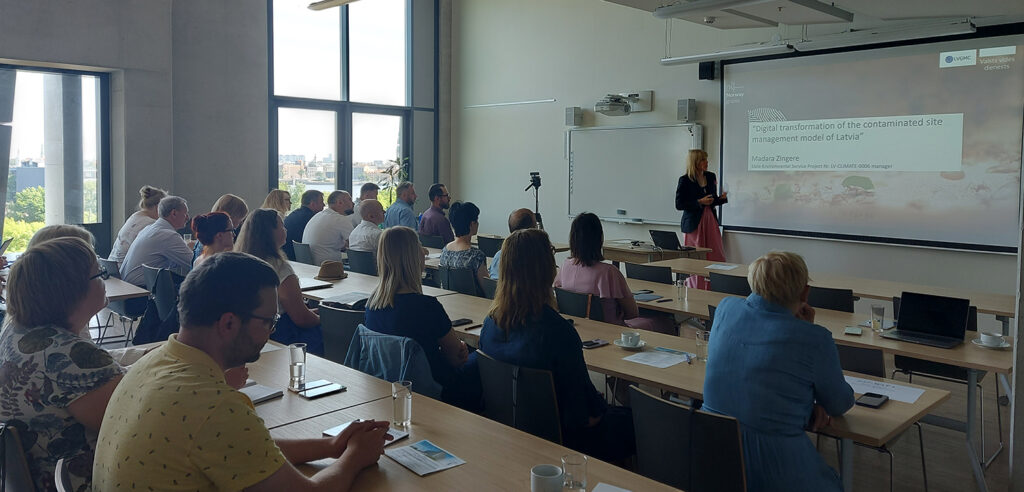
Tributes were again paid to Ukrainian partners by the Circular Based Waste Management project, where Mrs. Maritsa Kissamitaki, Communication Manager for the CBWM project gave an introduction on Circular Economy, project activities and key learnings in its course. The partner’s goals for the project were discussed, which although are different for each partner, all have in common learning about aspects of waste management in a circular economy context, as well as raising awareness on this issue especially among children and youth. Finally key learnings from the webinars and study tours were presented, activities and deliverables.
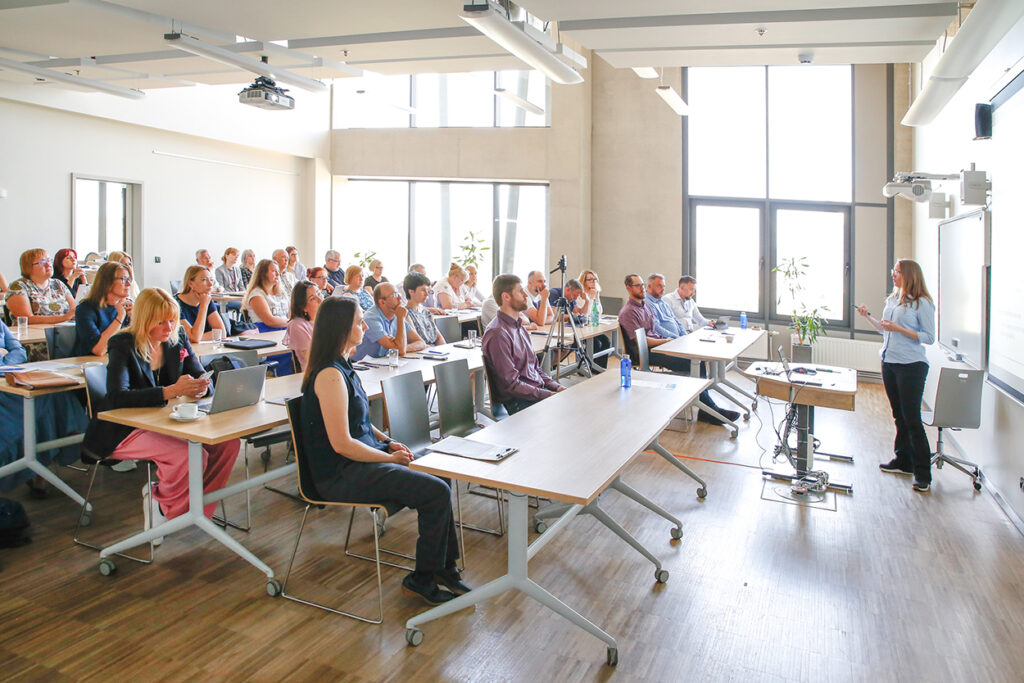
Dr. Inta Dimante-Deimantoviča from the Microplastic Laboratory at the Latvian Institute of Aquatic Ecology-LIAE, gave a more in depth presentation on studies of microplastics in Latvia. The amount of plastics produced worldwide has been increasing since the 50’s from 1,5 to 390,7 million tons in 2021. More than half of these plastics have been produced since the year 2000 and if continued at the same rate it is forecast that by 2050 almost 1,500 million tons will be produced. The world as it is today has learned to depend on plastics and living without them today would be very difficult if not impossible as conservation of food and medical supplies depend on plastics as well as keeping transport of goods as light as possible, resulting in less CO2 pollution. Microplastics are now found on every beach and underground deep enough where typically materials from before the 1950’s would not be found. This indicates the ability of plastic to filter deep into the ground meaning it is impossible to clean the world from microplastics entirely. At the Microplastic Laboratory of LIAE, research is focused on microplastic pollution and monitoring methods as well as aquatic ecosystems and recovery and restoration of water habitats.

Dr. Kristaps Lamsters, from the University of Latvia discussed the international cooperation in glacier studies and gave insights from results from expeditions in polar and subpolar regions with the purpose to study remote sensing of glaciers and the geophysical topography.
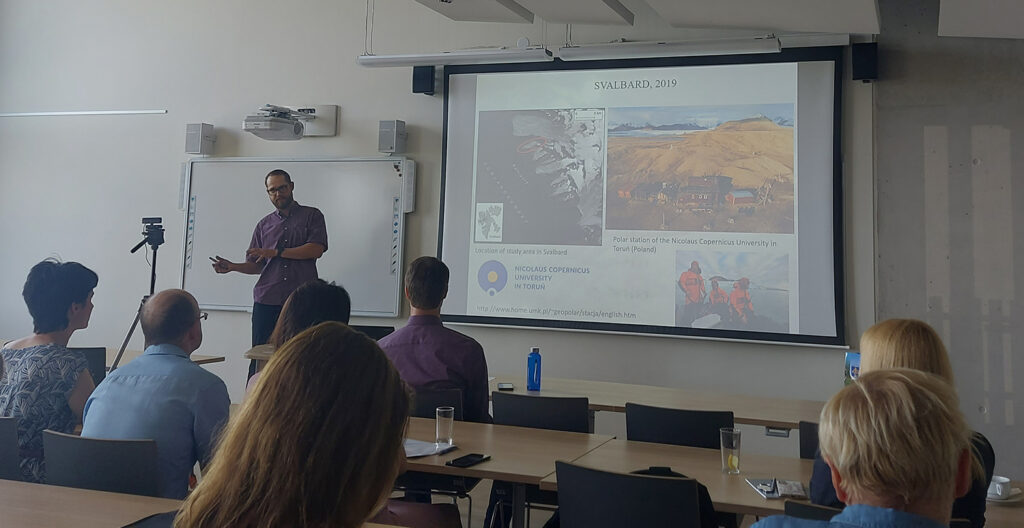
Next, Dr. Belinda Flem from the Geological Survey of Norway, offered insights on importance of groundwater in Norway, a country dominated by surface water. Her presentation stressed the importance of mapping the subsurface of Norway, as some cities around the coastline, such as Trondheim and Oslo are built on marine clay areas which are flat and easy to build on. These areas however are prone to subsidence, a phenomenon where the ground sinks due to movement of material underground. In the case of Oslo, this is caused due to changes in the groundwater level causing the ground to settle downward resulting in buildings becoming damaged. Radar measurements with satellites make it possible to map deformations particularly in urban areas and unstable rock slopes and so municipalities need geotechnical expertise to mitigate this risk. Furthermore, groundwater is an excellent source for geothermal heating.
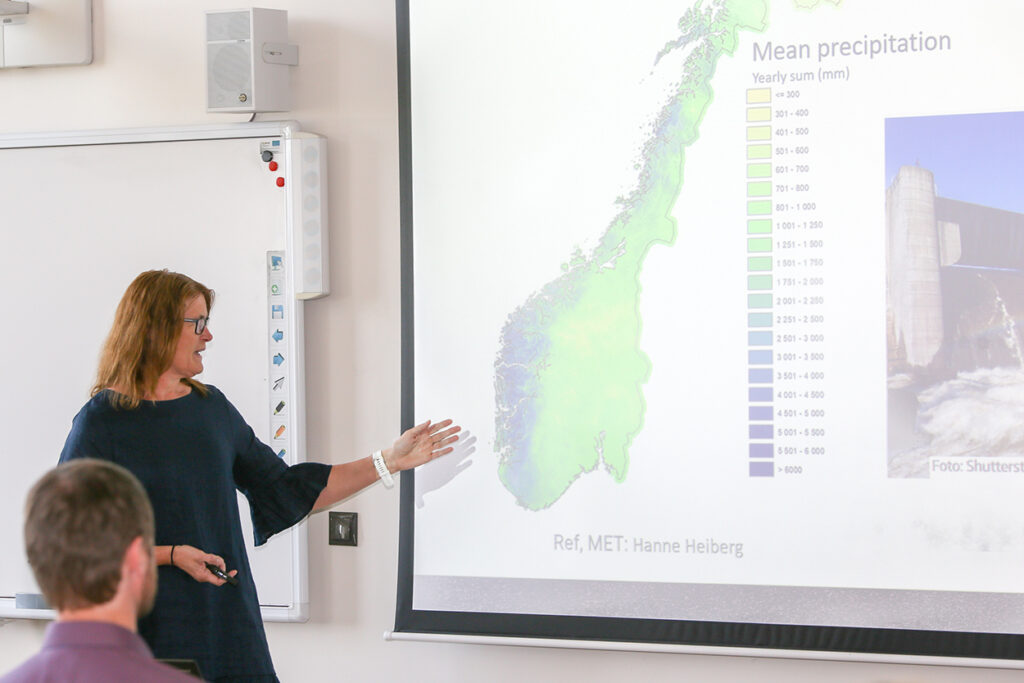
Dr. Andres Marandi from the Geological Survey of Estonia, gave an informative presentation on the existing knowledge on groundwater, which is found underground and is suitable for drinking, for use in industry and others. Mining activities, agriculture, extended use, developments and pollution, all put pressure on groundwater reserves. Water is in constant movement and reaches underground from precipitating water filtering through the ground, some of this water will discharge back into rivers. Part of the work carried out at the Geological Survey of Estonia is to describe groundwater so as to make it understandable by the general public. Research carried out also indicates how microplastics move around and pesticides and medicines are found to flow from the ground into the waters.

Ms. Magdaleena Männik from the Geological Survey of Estonia presented the assessment of the groundwater vulnerability in the Estonian–Latvian transboundary area and the maps being created during the EU-WATERRES project in order to prevent contamination.

Dr. Tatiana Solovey from the Polish Geological Institute gave an overview of the EU WATERRES project, which aims to promote the sustainable management and protection of shared groundwaters in the transboundary areas between Estonia and Latvia, and Poland and Ukraine. Pilot studies have been conducted under the project in both regions in order to obtain data and create a tool offering information on the groundwaters and allowing monitoring.

Finally, Dr. Jānis Bikše from the University of Latvia presented the MapPortal, created following the data acquired and study results from the two pilots. The MapPortal offers thematic maps of the two transboundary areas covering geological maps, groundwater monitoring points, spings, groundwater pollution, wells, groundwater bodies as well as where groundwater flows to and more.

The presentation was followed by a demonstration of how the MapPortal works and inviting the audience to access and try it out live.

Further photos from the study tour can be found on the project’s facebook page here.
The Circular Based Waste Management project is funded by Iceland, Liechtenstein and Norway through the EEA and Norway Grants Fund for Regional Cooperation – eeagrants.org.






